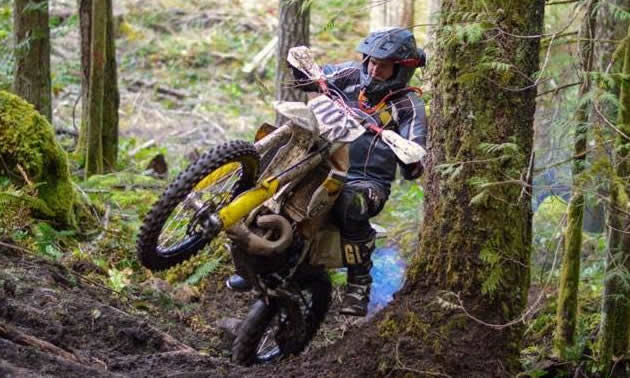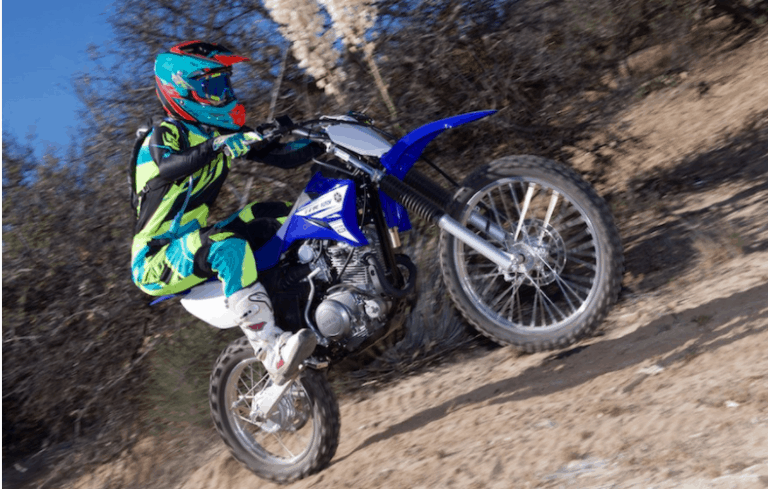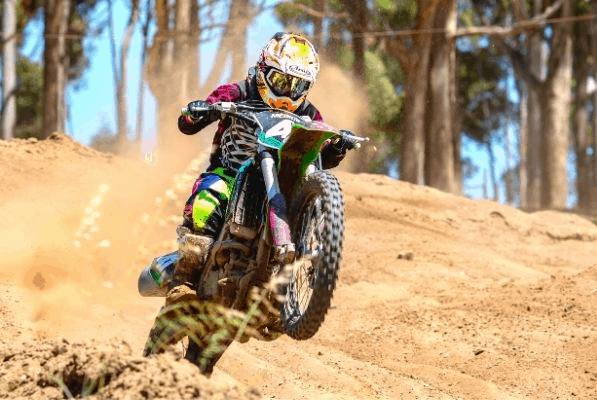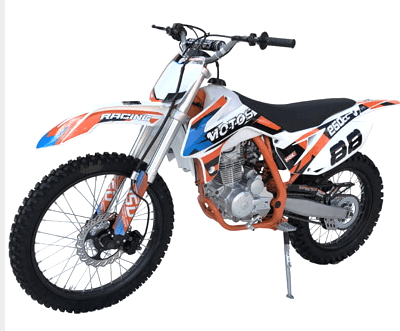What is a powerband on a dirt bike?
Table of Contents
There are many misconceptions about a dirt bike power band. The most common misconception about the power band is that it is a physical part of a dirt bike. Instead, a powerband is an RPM range that a motorcycle’s engine operates at peak performance.
There are many confusions about whether a rider should stay in a power band range or not. The best answer to this question is Yes, as it is the safest option to practice. We highly suggest staying within the power band range as it allows you to produce the bike’s best performance.
This article will discuss in detail about dirt bike power band, what is a powerband on 2-stroke, what is a powerband on 4-stroke, and 2-stroke vs. 4-stroke power band.
What is a powerband on a dirt bike?
In generic terms, an engine’s power band is an operating speed range under which a motor can deliver optimum performance. When talking about power band 4-stroke, many 4-stroke dirt bikes can perform up to 14000 RPM speed. At the same time, many 4-stroke dirt bikes have broader power bands.
When talking about 2-stroke and 4-stroke bands, these two are pretty different from each other. Each engine is equipped with a power band, but every power band is not noticeable in the same way for all dirt bikes. Here we have the differences between the 2-stroke and 4-stroke power bands mentioned below.
2-Stroke Power Band
When talking about a 2-stroke power band, these dirt bikes have maximum power in the upper-mid range towards their topmost end. Some 2-stroke bands have a small range of 300 RPM; on the other side, some have a range of 3000 RPM.
4-Stroke Power Band
4-stroke power bands have most of their power on the bike’s lower end, most in the mid-range, and it begins to reduction towards its top-end.
How to Use a Power Band?
The perfect way to use your power band on a dirt bike is by placing it in a relevant REV range. To understand it better, let’s learn it with an example. For instance, you have a high RPM dirt bike, and suppose that you did not make any power until 7000 RPM.
In this case, you will need to reach down onto the bike’s third gear to accelerate. Now there, you are in your power band. Suppose you want to accelerate at 4000 RPM when driving on a highway while pushing open the throttle. In that case, you can accelerate.
But it is not going to be a rapid acceleration. , there is no point in accelerating or opening the throttle when you’re not in the powerband. You must choose your power band as per your skill level.

Should You Stay in a Power Band?
Yes, we highly recommend staying in a power band, especially when racing your dirt bike. It helps maintain the RPM within the band and allows the bike to perform most efficiently through each gear. Experienced riders are pro in this, and most of the time, they stay within this range.
Well, the range of the power band varies from bike to bike, and it is essential to be familiar with your bike to know where the power band is located for each gear installed.
Pro riders use the clutch to increase the RPM without producing power to the wheels while turning. They can then let go of the clutch and apply a massive torque bust to the rear wheel, propelling them through the turn.
How to Know Your Skill Level?
If you are a new rider, then you should opt for mid-range power bands. On the other hand, pro riders can go for a high-end power band. Suppose you habitually ride on the territory with less traction, where there is complicated to navigate. In that case, it will be difficult for the rider to perform with a high-end power band.
In this kind of situation, low-end power will help you keep your bike in better control, allowing you to enjoy a faster ride. It is pretty easy to understand that pro riders require more power to keep staying in the game. But it may be an issue for the new riders with good conditions. Of course, it will be dangerous in slippery territories.
Obstacles to Consider in Territories
The risk of facing any obstacle in the territories is crucial. You must practice on the terrain surface check things. Such as elevation changes, soil, jumping frequency, which a rider comes across while riding the bike.
For these territories, the rider should opt for low-to-midrange power bands as they work pretty well on sand and mud. In case the track is tight and compact, it will turn in favor of lower-end power bands. On compact roads, it is complicated to navigate around corners with high-end power bands.
The perfect time to use a band is trail riding on a surface where there is a wider variety of soil and mud. Upper-mid range to high-end power bands works perfectly over long corners and fast turns.
Maintenance
Power bands designed for high RPM require more maintenance than lower to mid-range power bands. A high RPM engine requires more use of a clutch for getting the engine up to an increased range, where the power band can perform at its best. An engine that requires to withstand a high RPM is not durable enough to be used on a long-term basis.
Here, the engine will require parts like clutch plates, piston rings, etc., to be replaced even more frequently.
Conclusion
Hopefully, you might have a clear idea about a dirt bike power band and how it works. If you are a dirt bike rider, these details should help you to understand your dirt bike. Many dirt bike riders are not aware of multiple things. But hopefully, this article would help you understand such details if you are a beginner-level rider.
References:
- https://atvtrailreviews.com/atv-guides/what-is-a-dirt-bike-power-band
- https://dirtbikemasters.com/what-is-a-power-band-on-a-dirt-bike/#:~:text=The%20Power%20Band%20is%20the,is%20operating%20at%20peak%20performance.&text=Power%20is%20the%20product%20of,high%20torque%20and%20high%20RPM.
- https://www.motorcycleforum.com/threads/how-do-you-know-your-in-the-powerband.83910/
- Top 7 Best Dirt Bike Handlebars [Updated] - February 13, 2022
- How Fast Does A 150cc Dirt Bike Go - August 14, 2021
- How Fast Does A 200cc Dirt Bike Go - August 14, 2021







